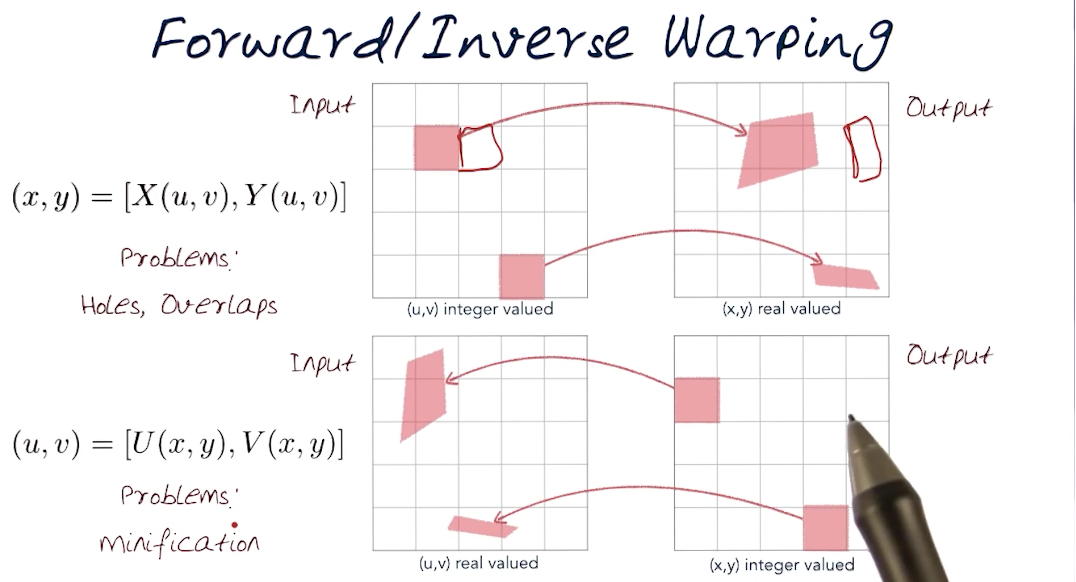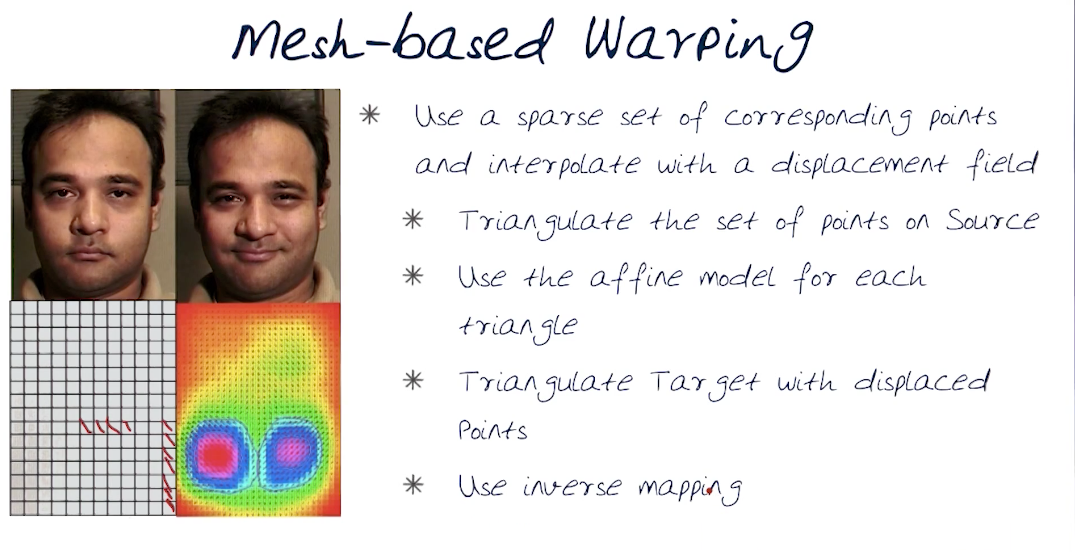# Image Warping
Unlike transformation, where lines remain lines, In warping, points are mapped to points without preserving the straight lines.
- Distorted through simulation of optimal aberrations
- Projected onto a curved or mirrored surface
- Partitioned into polygons and each polygon distorted
# Forward and Inverse Warping


Forward - What if pixel lands between the two pixels after warping. We use a technique called splatting to address this in order to distribute the values to neighboring pixels.
Inverse - What if the pixel comes from between two pixels during warping. We will interpolate color value from neighbors.
Usually inverse is better since it eliminates holes, but for that you need an invertible warp function which is not always possible to come up with
# Image Morphing
Image morphing changes or morphs one image or shape into another through a seamless transition
# Morphing Approaches
- Quadrilateral mesh displaced with variational interpolation
- Corresponding features/points i.e. feature-based morphing
- Corresponding oriented line segments (specifies translation, rotation, scaling)
# Mesh-based warping

